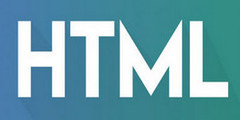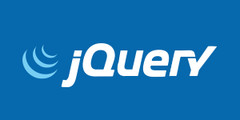decimal value of the number formed by concatenating the binary representations of first n natural numbers(通过连接前 n 个自然数的二进制表示形成的数字的十进制值)
问题描述
给定一个数n,找出由前n个自然数的二进制表示连接形成的数的十进制值.
打印答案模 10^9+7.
Given a number n, find the decimal value of the number formed by concatenating the binary representations of first n natural numbers.
Print answer modulo 10^9+7.
另外,n 可以大到 10^9,因此需要对数时间方法.
Also, n can be as big as 10^9 and hence logarithmic time approach is needed.
例如:n=4,答案 = 220
说明:数字形成=11011100 (1=1,2=10,3=11,4=100).11011100=220" 的十进制值.
Explanation: Number formed=11011100 (1=1,2=10,3=11,4=100).
Decimal value of 11011100="220".
我在下面使用的代码仅适用于第一个整数 N<=15
The code I am using below only works for first integers N<=15
String input = "";
for(int i = 1;i<=n;i++) {
input += (Integer.toBinaryString(i));
}
return Integer.parseInt(input,2);
推荐答案
请注意,使用字符串表示不是必需的(此外,在任务更改后没有用处).看按位算术的方法(Python,但原理是一样的)
Note that working with string representation is not necessary (moreover, is not useful after task changing). Look at approach with bitwise arithmetics (Python, but principle is the same)
有了关于模 1000000007 的新条件,我们只需在每一步的结果计算行中添加模运算,因为左移和 or-ing 相当于乘以 2 的幂再加,这些运算服从模的等价关系特性.注意中间结果不超过1000000007*n,所以long类型适合这里合理的n值.
With new condition concerning modulo 1000000007 we have just add modulo operation to result calculation line at every step, because shift left and or-ing is equivalent to multiplication by power of two and adding, these operations are obeyed to equivalence relations for modulo properties. Note that intermediate results don't exceed 1000000007*n, so long type is suitable here for reasonable n values.
n = 100
size = 0 #bit length of addends
result = 0 # long accumulator
for i in range(1, n + 1):
if i & (i - 1) == 0: #for powers of two we increase bit length
size += 1
result = ((result << size) | i) % 1000000007 #shift accumulator left and fill low bits with new addend
print(result)
没有按位运算的变体:
pow2 = 1
nextpow = 2
result = 0 # long accumulator
for i in range(1, n + 1):
if i == nextpow: #for powers of two we increase bit length
pow2 = nextpow
nextpow = nextpow * 2
result = (result * pow2 + i) % 1000000007 #shift accumulator left and fill low bits with new addend
这篇关于通过连接前 n 个自然数的二进制表示形成的数字的十进制值的文章就介绍到这了,希望我们推荐的答案对大家有所帮助,也希望大家多多支持编程学习网!
本文标题为:通过连接前 n 个自然数的二进制表示形成的数字


基础教程推荐
- 在 Java 中创建日期的正确方法是什么? 2022-01-01
- 验证是否调用了所有 getter 方法 2022-01-01
- 不推荐使用 Api 注释的描述 2022-01-01
- 如何在 JFrame 中覆盖 windowsClosing 事件 2022-01-01
- Java 实例变量在两个语句中声明和初始化 2022-01-01
- 从 python 访问 JVM 2022-01-01
- Java Swing计时器未清除 2022-01-01
- 大摇大摆的枚举 2022-01-01
- 多个组件的复杂布局 2022-01-01
- 如何在 Spring @Value 注解中正确指定默认值? 2022-01-01

















